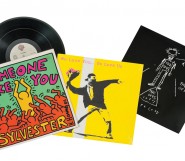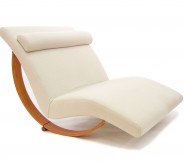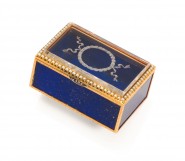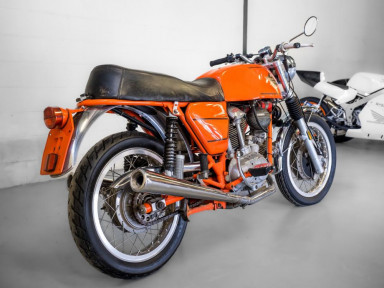Lot #14 - 1973-74 Ducati 750 GT - Mildly customised version of Ducati's legendary 750 GT
-
Auction House:Donington Auctions
-
Sale Name:Collectors' Motorcycles & Cars (New South Wales)
-
Sale Date:12 Dec 2021 ~ 12noon (AEDT)
-
Lot #:14
-
Lot Description:1973-74 Ducati 750 GT - Mildly customised version of Ducati's legendary 750 GT
Back in the early 1970s the consensus was if you wanted power and reliability you bought Japanese, but if you wanted to go around corners it had to be British. But for the average motorcyclist British bikes, notably Triumphs, BSAs and Nortons, were simply too much trouble. They leaked oil, were maintenance intensive and unreliable. Knowing they would at least go fast in a straight line, and get home after a ride, most motorcyclists simply put up with the weight, weak brakes and limp shocks of Japanese Superbikes. When Ducati released their 750cc V-twin in July 1971 it augured a combination of British style handling and braking with improved reliability. Compared with other Superbikes of the day the Ducati 750 was unique. The 90-degree V-twin was basically two 350cc singles lashed together. The cylinder heads followed the time-honoured fashion of the Bologna firm; single overhead camshafts driven by helical-cut bevel gears and towershafts. The bore and stroke of 80x74.4mm was similar to the 350 single an while the crankcases were vertically split, lubrication was by wet sump, without any external oil lines or oil tanks so the engine remained oil tight. Barely wider than a single, the 90-degree layout provided perfect primary balance and was incredibly smooth. There was no need for a rubber-biscuit engine-insulating system, no tall vibration-damping gear ratios, no sponge-sprung handlebars or Loctite to stop nut and bolt absenteeism. It may have looked a little ungainly but Ducati's twin was the perfect example of form following function. The central question was "how will it work," not 'how will it look," and Ducati succeeded brilliantly. Although the alloy engine, with dozens of carefully matched gears whirring away inside, was expensive to manufacture, Ducati didn't stint on the running gear. With the engine incorporated as a stressed member, the steel frame consisted of predominately straight tubing. The swingarm pivoted in generously sized bronze bushes and the chain adjusters were a rigid Seeley type. At a time when some Superbikes were fitted with forks with spindly 33mm tubes, the leading axle Marzocchi fork featured beefy 38mm stanchions. The long engine and 29-degree steering head angle contributed to a lengthy 1,530mm wheelbase but this provided exceptional high-speed stability. It may have been cumbersome at slow speeds but when the footpeg kissed the pavement in a 130-km/h sweeper and the bike didn't bobble, you knew Ducati got it right. Because of its unusual looks Ducati's 750 was initially greeted with some scepticism. But this all changed when Taglioni took a batch of 750 GTs off the production line to prepare as racing machines for the Imola 200-mile race. On 23 April 1972, Paul Smart and Bruno Spaggiari trounced the world's best, including Agostini and the MV Agusta and the finest Norton, Triumph, Kawasaki, Honda, BMW, Suzuki and Moto Guzzi could offer. As Ducati's great engineer Fabio Taglioni quipped after this victory, "When we won at Imola we also won the market." It was the beginning of a new era for Ducati and the 90-degree V-twin would become fundamental to Ducati's DNA. Over its brief four-year life span a mere 5,284 750 GTs were built and it was produced in an astonishing eleven different series. This example is an amalgam of a fifth series early 1973 engine and a mid-1974 tenth series frame. An earlier (1971-73) leading axle Marzocchi fork has replaced the original centre-axle Marzocchi, and 1979 Marzocchi oleo-pneumatic shock absorbers replaced the standard type. A double leading shoe front drum brake has replaced the standard single disc while Borrani aluminium rims replace the standard steel wheels. Along with custom colours and seat, other custom touches include minimalist aftermarket Smiths speedometer only instrumentation, dogleg levers, Lynx "RamFlo" air filters, and aftermarket ignition coils. Lager 750 Sport Dell'Orto PHF32A carburettors feed the engine. This a great opportunity to acquire a slightly modified Ducati 750 GT that will provide a great riding experience. Sold with an original handbook and Haynes workshop manual, the Smiths odometer displays 30,508 km. This motorcycle is being sold unregistered. -
Estimate:A$22,000 - 28,000
-
Realised Price:
-
Category:Automobiles & Accessories
This Sale has been held and this item is no longer available. Details are provided for information purposes only.















